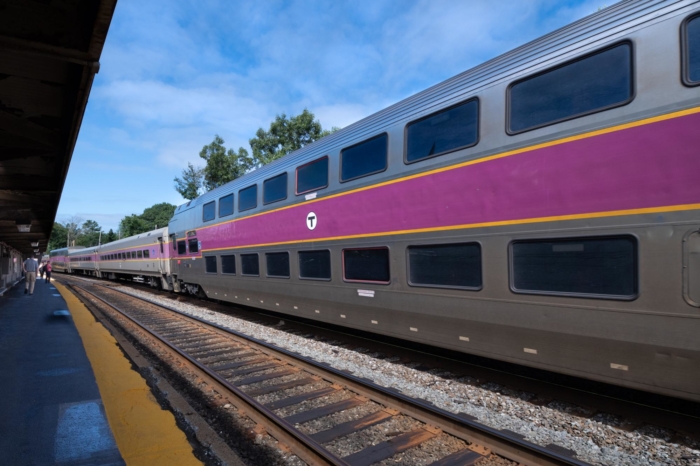MBTA must get “on board” with commuter rail accessibility upgrades
If you regularly ride the MBTA commuter rail, you’ve probably experienced a number of delays, patchy service, limited parking, overcrowding, and outdated equipment. But some would-be riders have significant difficulty boarding the train in the first place at most stations – namely, the elderly, disabled, and otherwise mobility-impaired individuals.
The problem is that many of the system’s 143 station stops were designed in the 19th century, long before the Americans with Disabilities Act mandated accommodating people in wheelchairs. As a result, a 2018 MBTA report listed a paltry 36 percent of commuter rail stations as “fully handicapped accessible” and 24 percent of the stations as requiring riders to climb stairs to board a train. Another 40 percent are “partially accessible,” meaning an at-grade platform exists in some places, but not for the entire length of the coaches. Fixing these shortcomings will be expensive, disruptive, and – as commuter rail ridership increases measurably on certain lines – necessary.
The number of handicapped-inaccessible stations varies widely among different branches of the commuter rail system. The Old Colony and Greenbush Lines have all fully accessible stops, while over half the stations on the Fitchburg Line are completely inaccessible. The longest stretch of contiguous inaccessible stops is on the Worcester Line, where seven stations in a row simply fail to allow wheelchairs or mobility-impaired people on board. On the Needham and Worcester Lines, there are no stations at all outside Boston that are fully accessible.
MassDOT has a good opportunity to address these commuter rail accessibility inequities during major upgrade and design projects. Notably, the Allston Multimodal Project will add a station to the Worcester Line, providing a good opportunity to direct mitigation funding towards handicapped accessibility in Newton, Wellesley, and beyond. These improvements are especially salient as a response to this project because they will facilitate faster boardings for all users, eliminating the need for conductors to laboriously remove the metal plates covering the stairs at each stop and for passengers to climb the stairs themselves.
Facilitating level boarding will likely save the most time at Back Bay Station, the destination for nearly 3,000 commuters every weekday on the Worcester Line alone. While Back Bay hosts platforms for four commuter rail branches and the Orange Line, the Worcester Line platforms are the only ones that aren’t completely at-grade. On the Worcester Line, only Boston Landing, Lansdowne, and South Station have fully accessible platforms.
Generally, more passengers board morning peak-hour commuter trains at stations further from Boston. Thus, a plan to construct all at-grade platforms at suburban stations may start in the urban hubs of Worcester and Framingham and then continue east. Major exceptions to this rule include West Natick and Natick Center, which may require expedited upgrades as the final suburban stops for some express trains.
Funding, operability during construction, and other issues remain crucial barriers to making all at-grade platforms a reality on commuter rail. Using the planned Newton accessibility upgrades as a rough guide, constructing high-level platforms will likely cost at least $15 million per station.
Still, the political will needs to be in place before any discussion of finance begins. While the holiday season (and the delays that often come with it) have passed, level boarding for the Worcester Line and beyond still needs to be on MassDOT’s wish list in 2020.
Andrew Mikula is the Lovett & Ruth Peters Economic Opportunity Fellow at the Pioneer Institute. Research areas of particular interest to Mr. Mikula include urban issues, affordability, and regulatory structures. Mr. Mikula was previously a Roger Perry Government Transparency Intern at the Institute and studied economics at Bates College.



